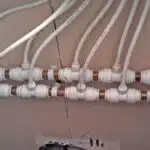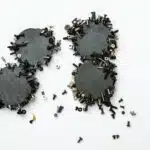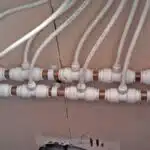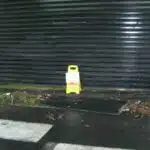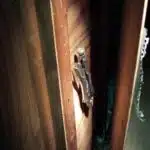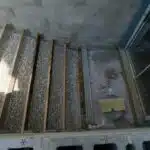The proper management of stormwater runoff is crucial in ensuring the safety and longevity of any property. One essential component in this process is the use of catch basins, which are designed to capture sediment and debris that could otherwise clog drainage pipes. Catch basins, also known as storm drains or curb inlets, are an important feature in any drainage system. In this article, we will explore what a catch basin is, how it works, and how to install one in your yard.
A catch basin is a structure that collects excess water from rainfall or irrigation and redirects it away from properties into underground drainage pipes. The primary function of a catch basin is to prevent flooding by capturing rainwater before it accumulates on the surface. Additionally, catch basins help reduce erosion by preventing soil loss caused by excessive water flow. Installing a catch basin can be an excellent investment for residential homeowners who want to protect their properties from potential damage caused by heavy rainfall. Understanding how to install one correctly can save time and money while providing long-term benefits for years to come.
The Importance Of Proper Stormwater Management
Proper stormwater management is crucial for maintaining a healthy environment. Rainwater harvesting and green infrastructure solutions are effective ways of managing stormwater runoff. By utilizing these methods, we can reduce the amount of harmful pollutants that enter our waterways and protect our ecosystems.
Rainwater harvesting involves collecting rainwater from rooftops, sidewalks, and other impervious surfaces. This water can then be stored and reused for non-potable purposes such as irrigation or washing cars. Green infrastructure solutions, on the other hand, involve using natural systems to manage stormwater. Examples include rain gardens, bioswales, and permeable pavement.
Implementing these methods not only benefits the environment but also provides economic advantages such as reduced costs for municipal stormwater management. As civil engineers/plumbers/drainage contractors, it is our responsibility to educate homeowners about the importance of proper stormwater management and provide them with solutions that meet their needs. In the following section, we will explore one such solution – catch basins – in more detail.
What Is A Drainage System?
A drainage system is an essential component of any landscape design. It is a system of pipes, channels, and other structures that help to manage the flow of water in an outdoor area. Properly designed and installed drainage solutions can prevent water damage, erosion, and other problems caused by excess moisture. A well-designed drainage system can also enhance the beauty and functionality of your outdoor space.
When designing a drainage system for your property, it is important to consider several factors. First, you need to assess the existing topography of the land and determine where water tends to accumulate. You should also consider the types of plants and trees on your property, as well as any structures such as buildings or walkways that might impede water flow.
Once you have assessed these factors, you can begin to develop a plan for your drainage system. This might involve installing French drains or catch basins, creating swales or berms, or using other techniques to redirect water away from your property. Ultimately, the goal is to create a system that effectively manages excess moisture while complementing the overall aesthetic of your landscape design.
- A properly designed drainage system should be able to handle heavy rainfalls without causing flooding or erosion.
- Drainage systems are often hidden from view but play a vital role in maintaining the health and beauty of outdoor spaces.
- The most effective drainage solutions will depend on the unique characteristics of each property, including soil type, slope angle, vegetation patterns, and more.
Understanding the function of catch basins is an essential part of creating an effective drainage system for your property. These devices are designed to capture stormwater runoff from hard surfaces such as driveways or sidewalks and direct it into an underground pipe network. In this way, catch basins help to prevent flooding and erosion by channeling excess moisture away from vulnerable areas. By incorporating catch basins into your overall landscape design plan, you can ensure that your outdoor space remains healthy, safe, and beautiful for years to come.
Understanding The Function Of Catch Basins
Catch basins are like the superheroes of rainwater management. When precipitation hits the ground, it can cause all kinds of damage if left unchecked. From pooling and erosion to flooding and water damage, there’s a lot that can go wrong. But with a catch basin in place, all that water is safely whisked away before it has a chance to wreak havoc.
Understanding catch basin design is essential for proper installation. These drainage systems are designed to collect water runoff from paved surfaces and direct it towards pipes or underground chambers where it can be safely stored or discharged into nearby streams, lakes or rivers. Catch basins are usually installed at low points on properties where water tends to accumulate and can be customized with different types of grates depending on the size and type of debris they need to filter out.
One common mistake made during catch basin installation is improper placement. It’s important to make sure your catch basin is located in an area where it will receive maximum runoff without being blocked by any obstacles such as trees or buildings. Additionally, ensuring that the catch basin is installed at the appropriate depth will ensure efficient drainage and prevent backflow issues. By following these guidelines, you’ll be well on your way to successful catch basin installation!
Understanding catch basin design is key for any successful installation project. Common mistakes include improper placement which causes issues with drainage efficiency and backflow problems. In the next section, we’ll take a closer look at different types of catch basins available on the market today and how they differ from one another.
Types Of Catch Basins
Catch basins come in various types, each with its unique features and uses. One type of catch basin is the drop inlet that has a V-shaped design to allow water to flow smoothly into it. Another type is the curb inlet that is used on streets and curbsides to collect rainwater runoff from the pavement. Curb inlet catch basins are typically larger than drop inlets and can be designed with grates or hoods to prevent debris from entering.
Different types of catch basin covers include grates, hoods, and combination covers. Grates are made of metal bars arranged in a grid pattern that allows water to flow through but prevents large objects from entering the catch basin. Hoods are similar to grates but have sloping sides that direct water towards the center of the basin. Combination covers have both a grate and hood design, providing better protection against debris.
Catch basin cleaning and maintenance tips include removing debris such as leaves, dirt, and rocks regularly. Catch basins should be cleaned at least once every six months or more frequently if they are located near trees or other areas with heavy debris. Regular inspection of catch basins can help detect any damage or deterioration early on, preventing costly repairs down the line.
Transition: Now that we’ve discussed different types of catch basins and maintenance tips, let’s move on to choosing the right catch basin for your property.
Choosing The Right Catch Basin For Your Property
Finding the right catch basin size is crucial in ensuring proper drainage. A catch basin that is too small will not be able to collect all the water, while a catch basin that is too large can cause unnecessary excavation and installation costs. Consider the size of your yard and the amount of water it typically receives when choosing a catch basin. It’s also important to note that larger catch basins may require more maintenance than smaller ones.
When it comes to catch basin placement options, there are a few things to consider. The ideal location would be at the lowest point of your property where water collects naturally. However, if this isn’t possible, other areas to consider include near downspouts or areas where water runoff from neighboring properties enters yours. Additionally, it’s important to place the catch basin away from any structures or foundations to avoid potential damage from excess water accumulation.
Here are four factors to keep in mind when choosing the right catch basin for your property:
- Material: Catch basins can be made from various materials such as concrete, plastic, or metal.
- Grate type: Different grate types can affect how well your catch basin captures debris.
- Outlet size: The outlet size should match the diameter of your pipes for maximum efficiency.
- Capacity: Choose a capacity that can handle the amount of rainfall expected in your area.
To ensure proper installation and functionality, choosing the right catch basin for your property is crucial. With careful consideration of size and placement options, along with these key factors listed above, you can select a catch basin that will effectively manage excess water on your property. In the next section, we’ll discuss necessary tools and materials needed for installation.
Necessary Tools And Materials For Installation
To properly install a catch basin in your yard, you will need to gather the necessary tools and materials. The first step is to determine the size of the catch basin needed for your specific drainage needs. Once you have determined this, you can purchase the appropriate size basin along with the necessary adapters and fittings.
Types of materials needed for installation include PVC piping, cement, gravel, and sand. PVC piping is used to connect the catch basin to your existing drainage system, while cement is used to secure it in place. Gravel and sand are used as a base for the catch basin. It is important to use high-quality materials for installation to ensure longevity and proper functionality.
Step by step instructions for installing a catch basin will vary based on your specific yard and drainage system. However, general guidelines include excavating an area for the catch basin, laying down a base layer of gravel and sand, securing the basin in place with cement, connecting it to your existing drainage system using PVC piping and adapters, backfilling around the basin with soil or additional gravel/sand if necessary, and finally testing its functionality by pouring water down into it.
Preparing The Area For Installation
Now that you have all the necessary tools and materials, it’s time to prepare the area for installation. But before we dive into that, let’s take a moment to appreciate the catch basin. It is a true marvel of modern plumbing technology, a humble yet integral component of any drainage system. Without it, our yards would be flooded with rainwater and debris.
But enough waxing poetic about catch basins – let’s get back to work. Choosing the location for your catch basin is crucial. You want to place it in an area where water tends to accumulate and flow towards. This could be at the bottom of a slope or near a downspout from your gutter system. Once you’ve identified the location, mark it with spray paint or flags.
Next up is soil preparation. Excavate the site to create a hole that is slightly larger than your catch basin’s dimensions. Remove any rocks, roots, or other debris from the site. Make sure that the bottom of the hole is level so that your catch basin will sit evenly on its base. And don’t forget to compact the soil around the edges and base of the hole – this will prevent erosion and ensure stability for your catch basin.
Now that you’ve chosen your location and prepared the soil, it’s time for excavation! Get ready to dig deep as we move onto the next step in installing your very own catch basin in your yard!
Excavating The Site
Site excavation is the first crucial step in installing a catch basin. The catch basin should be located in an area where it can efficiently collect and channel water. Therefore, proper site preparation is necessary to ensure that the water flows towards the catch basin as intended. Excavation involves removing soil and creating a hole that is wide and deep enough to accommodate the catch basin.
The size of the hole will depend on the dimensions of the catch basin and its surrounding area. The soil should be removed in layers to avoid destabilizing the ground around the hole. After excavating, it is essential to prepare the soil by ensuring that it is level and compacted. This helps to prevent any settling or shifting of the catch basin during heavy rains.
Moreover, thorough site preparation ensures that there are no obstructions such as rocks or roots that can impede proper installation of the catch basin. It also helps in reducing any potential hazards for people working around or near it. Once excavation and soil preparation are complete, it is time to proceed to set up the catch basin in place.
Transition: Now that we have finished site excavation and soil preparation, let’s move on to setting up the catch basin in place.
Setting The Catch Basin In Place
Prior to installation of a catch basin, the area must be cleared of debris and vegetation. The size of the hole for the installation of the catch basin must be determined to ensure proper fit and drainage. The hole should be dug to a depth that is below the frost line to prevent the catch basin from shifting during freeze and thaw cycles. A level and smooth surface must be created to ensure proper placement and to prevent water from pooling around the catch basin.
Preparing The Area
Before setting the catch basin in place, it is crucial to prepare the area properly. The first step is to remove any obstacles that may interfere with the installation process. This includes rocks, tree roots and other debris that may be present in the designated area. Failing to remove these obstacles can result in an unstable installation and may cause damage to the catch basin over time.
Once all obstacles have been cleared, the next step is to level the ground where the catch basin will be placed. This involves removing any excess soil or debris from the designated area and ensuring that it is flat and even. Failure to properly level the ground can lead to water pooling around the catch basin, which defeats its purpose of collecting excess water from your yard.
After leveling, it’s important to compact the soil around the designated area where your catch basin will be installed. This can be achieved by using a tamper or compactor machine. Compacting ensures that there are no air pockets beneath or around your catch basin, which can cause instability over time. Properly preparing your yard before installing a catch basin is essential for ensuring its longevity and effectiveness in managing stormwater runoff.
Digging The Hole
To properly install a catch basin, it is essential to prepare the area beforehand. After clearing any obstacles and leveling the ground, the next step is to dig a hole for the catch basin. Digging techniques and equipment selection are crucial factors that can affect the stability and functionality of the catch basin.
When digging the hole, it’s important to ensure that it is deep enough to accommodate the size of your catch basin. The depth should also allow for proper drainage and prevent water from pooling around the catch basin. The width of the hole should be slightly larger than the dimensions of your catch basin to allow room for backfilling and compacting.
To achieve optimal results when digging, different techniques can be used such as hand digging or using excavation equipment like an excavator or mini excavator. Equipment selection will depend on various factors such as soil type, site accessibility, and depth required. Using appropriate equipment and techniques will help minimize disruptions to surrounding areas while ensuring a stable installation.
Properly digging a hole for a catch basin is an important step in setting it up effectively. By following proper techniques and selecting appropriate equipment, you can ensure that your catch basin functions optimally in managing stormwater runoff in your yard.
Connecting The Catch Basin To Drainage Pipes
Connecting pipes from the catch basin to the drainage system is a critical step in ensuring that the water flows smoothly. To connect the pipes, it is necessary to consider their location and size. The pipes should be at least 4 inches in diameter and should be located below the frost line to prevent freezing during winter.
Proper sealing of the pipes is essential to avoid any leakage or damage caused by soil pressure or other external factors. It is recommended to use PVC cement to secure connections between pipes and fittings. Additionally, using a rubber gasket between connecting pipe sections can also improve sealing and prevent leaks.
In summary, connecting the catch basin to drainage pipes involves considering their location and size, along with proper sealing techniques. By following these guidelines, you can ensure that your catch basin system functions smoothly without any issues related to leakage or damage caused by soil pressure or external factors.
Transition: Once you have successfully connected your catch basin to drainage pipes, it’s time for backfilling and compacting the soil around it.
Backfilling And Compacting The Soil
Backfilling is the process of replacing the excavated soil to the area from which it originated. Compacting the soil is necessary to ensure the structural integrity of the fill material and reduce settling. A catch basin is an engineered drainage system that collects surface water runoff and directs it away from an area. Installing a catch basin in a yard involves excavation, backfilling and compaction of soil, as well as installation of piping and grates.
Backfilling
Backfilling is a crucial step in the installation of a catch basin in your yard. It refers to the process of replacing soil around the basin after excavation and installation. Backfilling ensures that the basin remains stable, and it also helps to prevent soil erosion. Excavation safety must be considered during this process as well. Before backfilling, it is essential to ensure that the excavation site is safe and stable.
To effectively backfill around the catch basin, you must use proper techniques. The first step is to place a layer of gravel at the bottom of the excavation site before placing the basin. This gravel layer will help with drainage and support for the basin’s weight. After placing the basin, fill in around it with soil, compacting each layer as you go along. It is important to ensure that each layer is well-compacted before moving on to avoid any settling or shifting of soil.
Backfilling can prevent soil erosion by providing a barrier between runoff water and your yard’s foundation. When backfilling around the catch basin, ensure that you do not bury any existing pipes or utility lines in your yard accidentally. Also, avoid using large rocks or debris when backfilling as they could damage pipes or cause uneven settling of soil over time. Proper backfilling will help maintain stability and good drainage for your catch basin for years to come.
Compacting Soil
In the installation of a catch basin, backfilling is an important step in ensuring stability and proper yard drainage. However, it is not enough to just fill in soil around the basin. The process of compacting soil must also be done correctly to ensure that the backfilled soil remains stable over time. Soil compaction refers to the process of compressing soil particles to reduce air spaces and increase density. This denser soil can better support the weight of structures such as catch basins and prevent settling or shifting.
To properly compact soil, it is important to use appropriate equipment such as a mechanical compactor or hand tamper. The equipment used will depend on the size and depth of the excavation site. The first layer of soil should be placed in small increments and then compacted before adding more layers. Each layer should be thoroughly compacted before proceeding to the next layer. This ensures that there are no voids or air pockets left behind.
Compacting soil during backfilling provides several benefits, including improved drainage, greater stability for structures, and reduced risk of soil erosion. Properly compacted soil can also help prevent damage to underground utility lines by reducing movement caused by shifting soil. In addition, well-compacted soil reduces the risk of water pooling around structures which can lead to foundation problems or other issues. A civil engineer/plumber/drainage contractor who prioritizes serving others should always ensure that they are using proper techniques for both backfilling and compacting soil during catch basin installation to provide effective solutions for their clients’ yard drainage needs.
Properly Grading The Area
Properly grading the area is a crucial step in installing a catch basin. Grading techniques should be employed to ensure that the ground slopes away from the catch basin, allowing for efficient water drainage. The first step in grading the area is to clear any debris or vegetation on the surface.
Soil preparation is also an important aspect of proper grading. The soil should be loosened and leveled to ensure that water flows towards the catch basin. A slope of at least one inch per foot should be created to allow for efficient water runoff. It is essential to compact the soil after grading to prevent settling and erosion.
To help illustrate proper grading techniques, here’s a table outlining recommended slopes for different types of surfaces:
| Surface Type | Slope |
|---|---|
| Concrete | 1/4 inch per foot |
| Asphalt | 1/4 inch per foot |
| Lawn | 1-2% (or 1/8 inch per foot) |
| Garden Bed | 2-5% (or 1/4 – 5/16 inch per foot) |
| Soil Surface | 2-3% (or 1/4 – 3/8 inch per foot) |
By employing these recommended grading techniques and preparing the soil accordingly, you can ensure efficient water runoff towards your catch basin. With proper grading, you can prevent standing water, reduce erosion, and protect your property from damage caused by excessive moisture.
As important as it is to grade the area properly, testing the catch basin and drainage system are equally critical steps in ensuring adequate drainage. By following these steps carefully, you can guarantee that your yard stays free from flooding and other drainage issues.
Testing The Catch Basin And Drainage System
Catch basins are designed to capture stormwater runoff and direct it to a drainage system. Prior to installation, it is important to inspect the catch basin for any signs of damage or wear. Testing the drainage system involves verifying that it is free of any debris or blockages. Once the catch basin and drainage system have been installed, it is important to monitor the water flow to ensure proper functioning. This can be done by checking the water level in the catch basin and verifying that it is within the normal range. Additionally, it is essential to inspect the entire drainage system for any signs of leakage that could indicate a need for maintenance. Regular maintenance of the catch basin and drainage system is necessary to ensure optimal performance.
Inspecting The Catch Basin
Have you ever wondered what a catch basin is and how it works? A catch basin is an underground drainage structure that collects rainwater from the surrounding area and filters out debris to prevent clogs in the drainage system. It is an essential component of any drainage system, especially in areas with heavy rainfall. If you have a catch basin installed in your yard, it is important to inspect it regularly to ensure that it is functioning correctly.
The first step in inspecting the catch basin is to remove the grate covering the top of the structure. This will allow you to see inside and check for any debris or blockages that may be present. Common issues include leaves, sticks, and other organic material that can accumulate over time and cause clogs in the drainage system.
Next, you should check the outlet pipe to ensure that it is clear of obstructions. A blocked outlet pipe can prevent water from flowing out of the catch basin and into the main drainage system, causing flooding and other problems. If you notice any blockages, use a plumbing snake or similar tool to clear them out.
In conclusion, regular catch basin inspection is crucial for maintaining a functioning drainage system and preventing costly repairs down the line. By following these simple steps, you can identify common issues and take action before they become major problems. Remember to always wear protective gear when working with drainage systems and consult a professional if you are unsure about any aspect of installation or maintenance.
Testing The Drainage System
The catch basin is an essential component of any drainage system, but it needs to be inspected regularly to ensure that it is functioning correctly. One crucial aspect of this inspection process is testing the drainage system to determine if water flows correctly. This process involves a thorough analysis of the water flow in and out of the catch basin and the surrounding area.
During a drainage inspection, we conduct a water flow analysis to assess how efficiently the water moves through the catch basin and into the main drainage system. We check for any signs of standing water, which could indicate that the drainage system is not functioning correctly. This can be caused by blockages in the outlet pipe or other issues that prevent proper water flow. By testing the drainage system, we can identify these issues and take steps to correct them before they cause more significant problems.
Testing the drainage system is an integral part of maintaining a functioning catch basin and ensuring that your property remains free from flooding and other issues related to poor drainage. By working with experienced professionals who understand how to inspect and maintain these systems, you can rest assured that your property will remain protected from rainwater damage. So if you suspect that your catch basin or drainage system is not functioning correctly, don’t hesitate to contact us for assistance in testing and correcting any issues.
Monitoring Water Flow
Testing the catch basin and drainage system is crucial in ensuring that they are functioning correctly and preventing flooding and other issues related to poor drainage. One of the essential aspects of this inspection process is monitoring water flow. Water flow analysis allows us to assess how efficiently water moves through the catch basin and into the main drainage system. However, it is not enough to test water flow once; It is essential to monitor water quality continually.
Monitoring water quality is necessary because urbanization has a significant impact on water flow. As cities grow, natural surfaces like soil and vegetation are replaced with concrete, pavement, and building structures. This phenomenon leads to increased runoff and decreased infiltration, resulting in flood risk. Moreover, urbanization also increases pollutants in stormwater runoff due to various human activities like industrial processes, transportation, construction activities, etc. Therefore, monitoring water quality helps identify any pollutants present in the runoff before it enters the drainage system.
In conclusion, testing the catch basin’s drainage system through regular monitoring of water flow is critical in maintaining efficient drainage systems that can handle stormwater runoff effectively. By continually monitoring water quality alongside testing for efficient water flow movement within catch basins and pipes feeding into them, we can detect issues early enough before they spiral out of control. This way, we can take appropriate corrective measures like cleaning debris from inlet grates or fixing broken pipes to prevent property damage caused by flooding or backups.
Maintaining Your Catch Basin
After testing your catch basin and drainage system, it is important to maintain it properly. One of the most important aspects of maintenance is cleaning. Catch basins can accumulate debris and sediment over time which can lead to clogging and other issues. To avoid this, regular cleaning should be performed using appropriate techniques.
Cleaning techniques for catch basins include vacuuming, manual removal of debris, and pressure washing. Vacuuming involves using a special truck-mounted vacuum to suck out any accumulated debris. Manual removal involves physically removing any debris by hand or with tools such as shovels or rakes. Pressure washing uses high-pressure water to dislodge any buildup on the walls and floor of the catch basin.
Common issues that can arise with catch basins include clogs, odors, and structural damage from freeze-thaw cycles or heavy traffic. These issues can be avoided or minimized through regular maintenance as well as proper installation by a qualified contractor. It is important to address any problems promptly in order to prevent further damage or costly repairs.
Proper maintenance of your catch basin will ensure that it functions effectively for years to come. In addition to preventing clogs and other issues, maintaining your catch basin will also help prevent flooding and erosion on your property. By taking proactive steps to keep your drainage system in good working order, you will not only protect your own property but also contribute to the overall health of your community’s infrastructure. In the subsequent section, we will discuss the benefits of installing a catch basin in more detail.
Benefits Of Installing A Catch Basin
Imagine a river flowing through a dense forest. The water moves smoothly, carrying leaves and twigs downstream. However, as the river reaches a narrow section, debris accumulates in the water. Suddenly, the calm stream turns into a turbulent current. This is similar to how water flows through our drainage systems. Without proper management, debris can clog pipes and cause flooding on streets and properties. One solution to this problem is to install catch basins.
Installing catch basins can bring several benefits to your yard or property. Here are some of them:
- Prevents flooding: Catch basins are designed to collect rainwater and divert it away from your property. When heavy rainfall occurs, catch basins prevent excess water from pooling on your lawn or driveway.
- Cost-effective: A properly installed catch basin system can save you money in the long run by preventing costly damage caused by flooding or erosion.
- Maintains cleanliness: Catch basins trap debris such as leaves, dirt, and rocks before they enter the drainage system. This reduces the amount of sediment carried by runoff water which helps keep streams and rivers clean.
As civil engineers/plumbers/drainage contractors, we recommend installing catch basins for all residential and commercial properties that require efficient drainage systems. The benefits of having a catch basin far outweigh its installation costs. It not only protects your property from flooding but also contributes to maintaining environmental cleanliness by reducing sedimentation in streams and rivers. Consider contacting us today for professional installation services!
Conclusion
Proper stormwater management is essential to maintaining a healthy and functional property. Drainage systems are an integral part of this process, with catch basins being a critical component. Catch basins are designed to collect excess water from runoff, preventing flooding and erosion. There are various types of catch basins available on the market, and it’s crucial to choose the right one for your property.
To install a catch basin in your yard, you must first grade the area correctly. This step ensures that water flows towards the basin, allowing it to function effectively. Once installed, testing the system is essential to ensure proper functionality. Regular maintenance is also necessary to keep your catch basin in good working order.
In conclusion, as a civil engineer/plumber/drainage contractor, I urge homeowners to prioritize proper stormwater management for their properties. Catch basins are an integral part of this process and should be installed correctly by professionals with experience in drainage systems. Just like how our bodies need proper drainage mechanisms to function optimally, so too do our properties need effective stormwater management measures to prevent damage from excess rainfall or snowmelt. So let us take care of our homes like we take care of our bodies- with attention and care!
Image Credits
- “Jordan River Garbage Catch Basin” by Tony Frates (featured)







